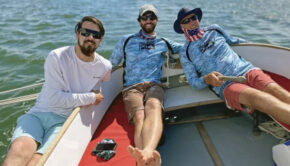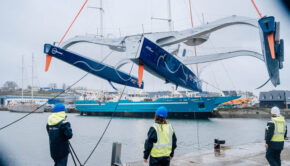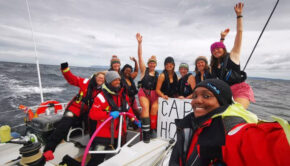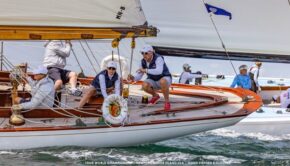Notice to Mariners: The Pros (and the Cons)
Published on March 2nd, 2022
by Lydia Mullan, SAIL
Let’s talk about performance sailing. Specifically, women’s involvement in on the big boats.
The idea of inclusive sailing at the highest level is not a recent phenomenon. In fact, in 1900 (yes, you read that right, 122 years ago) Hélène de Pourtalè was the first woman to ever receive a gold medal in the Olympics for being part of the three-sailor crew of Lérina, which won the 1-2 Ton class. In 1989, Tracy Edwards famously assembled her all-female crew for the Whitbread Ocean Race. In 1995, there was an all-female America’s Cup team. Isabelle Autissier and Catherine Chabaud both raced in the Vendee Globe in 1996.
But for all the good things happening in the final decades of the 20th century, the first two decades of the 21st century have been a little rocky. The Volvo Ocean Race (formerly the Whitbread) took an entire decade off from having women involved, while the America’s Cup saw a dramatic lock out of female sailors as the boats got higher tech and required more “manpower” to sail.
That’s not to say that women haven’t fought fiercely for their spots on the start line (Team SCA, Pip Hare, Sam Davies, Sally Barkow, Isabelle Joschke, just to name a few) and there haven’t been powerful advocates for women looking to advance in the sport (see the Magenta Project).
But many have criticized the lack of opportunity in mid-level competition for creating an unbridgeable experience gap between male pros and their would-be female counterparts. To fix this, the big races have introduced a variety of programs to get women involved. However, some, I would argue, more effective than others. – Full report









 We’ll keep your information safe.
We’ll keep your information safe.